Craftmanship
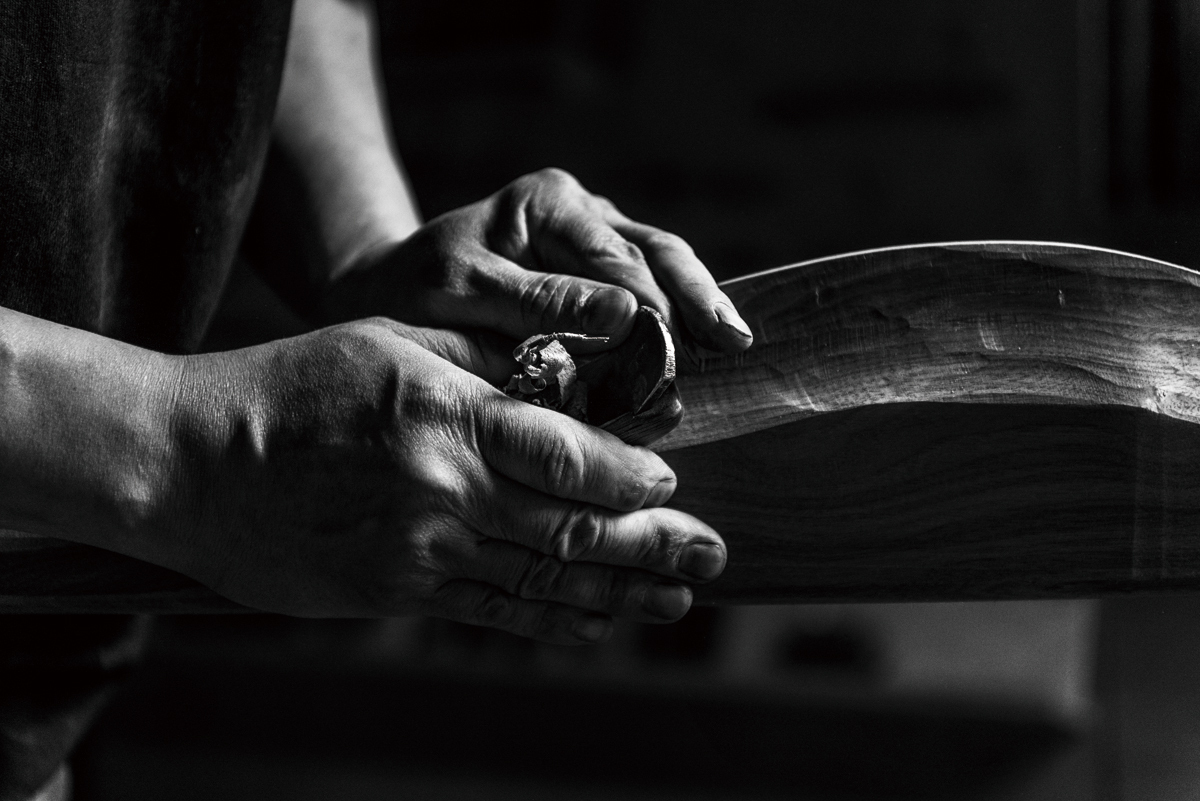
KOMAの家具づくりは家具職人でありデザイナーでもある松岡茂樹がスケッチを描き、図面を起こし、まずは自らの手で一点物の作品を作ることから始まる。 そこから職人チームと共に製品化していくのだが、そうやって人の手で表現された作品を機械で再現することはできない。
だからKOMAの製品づくりは全てハンドメイドにこだわっている。そして製品づくりに関われるのは、技術と感性が認められた一部の職人に限られているから、一度に作れる製品の数は極めて少ない。一つ一つの表情や個性を大切にしながら人の手でしかうみ出せない、一点物作品の価値を製品にした「あなたと共に生きる家具」をつくっている。
Furniture craftsman and designer Shigeki Matsuoka draws a sketch, a blueprint and makes the first prototype of one-of-a-kind furniture, all with his hands. This is how KOMA's pieces begin. Then he and his team proceed to making this into a product. Our pieces are thoroughly made with our hands, and no machine could imitate that.
This is why we adhere to hand-making all of our products. And only the few who's techniques and sensibilities are acknowledged, could join the team of makers, which limits the number of furnitures we make. We hold every texture and character of the wood valuable, and make products that satisfy the beauty of one-of-a-kind piece, that only our hands could make. A furniture as "a partner of your life".
デザイン
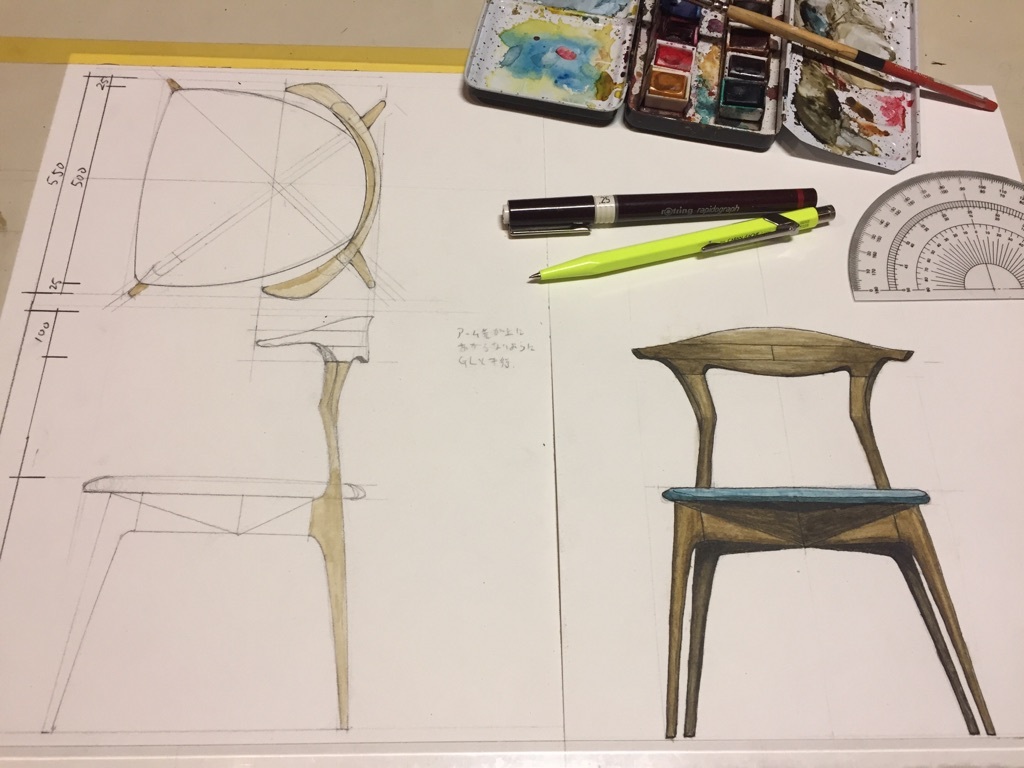
座り心地や持ち運びのしやすさ、安全性や強度など、道具としての機能を探していくと自然と美しいデザインへの着地点が見つかるから「フォルム先行のデザインはしない」というのが松岡の考え方だ。
この椅子に座ってゆっくり本を読みたいとか、このテーブルの上で好きな酒を楽しみたいとか、そんなふうに人の感情を動かすというのも道具が持つべきひとつの機能である。 無駄は削ぎ落とし「用の美」にあふれた家具づくりを目指している。
Design
Matsuoka's theory is that when you probe into the level of comfort, portability, safety and strength of the furniture as a tool, the beauty of the design always comes to be. So the form never comes first in his work. We offer furnitures that stir peoples emotions, such as dreaming of a leisurely time reading a book on the chair, or picturing yourself having a favorite drink on the table. We eliminate all unnecessity, to make a furniture filled with the "beauty of use".
刃物の手仕上げ
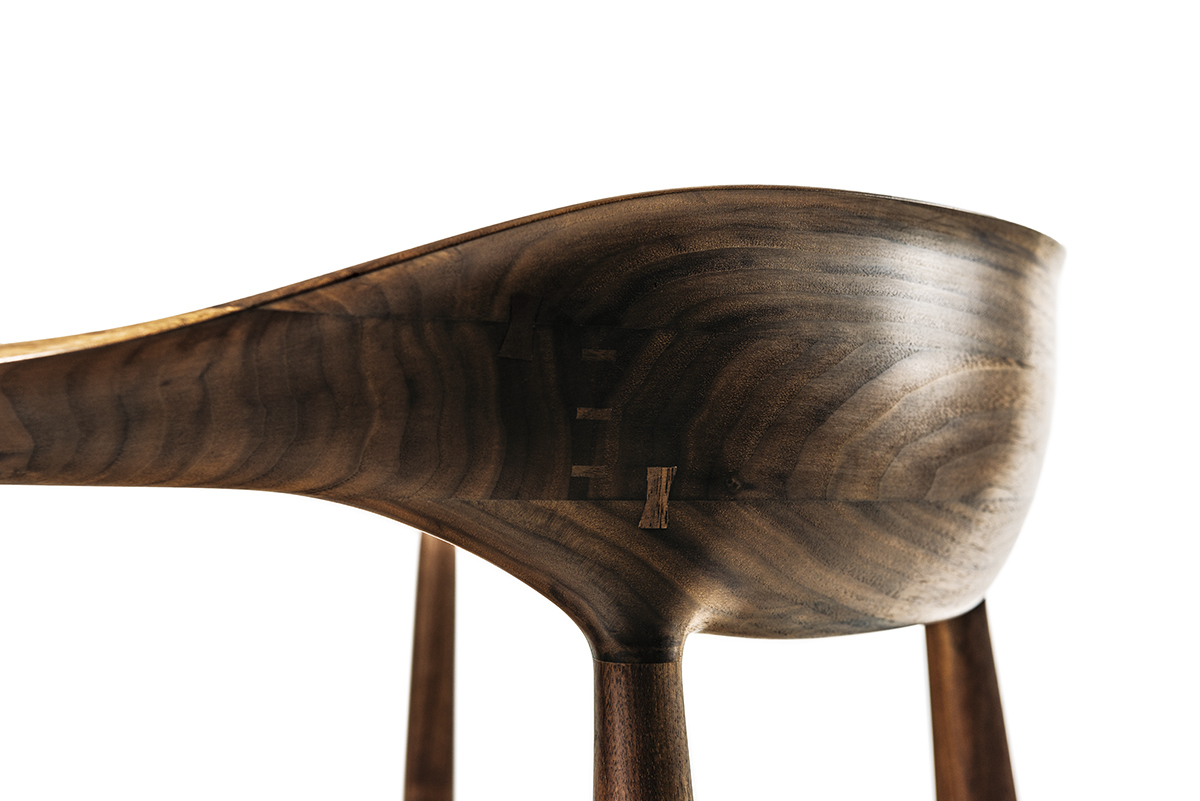
KOMAの製品には「プクッじゃなくてフワッ」とか「シュじゃなくてスゥ」など何とも製品にしづらい松岡の感覚をカタチにする造形力が要求される。 それには瞬時に木目を読み、手の一部のように自在に鉋や刀を操る技術が必要だ。
座り心地を決める優しいフォルム、ずっと撫でていたくなるようななめらかな触れ心地、木の表情を最大限に引き出した艶やかで美しい仕上げなど、それらは日々鍛錬を継続し、技と感性を身につけた一部の職人の刃物の手仕上げによって生み出されている。
Finishing touches with the blades
KOMA's products is often expressed in a way of Matsuoka's sense, such as "not plump but fluffy" or "not pointy but straight", and everyone has to put that into shape. To do that, an advanced technique to read grains of wood, and to use blades and planes like part of your bodies, are required.
The gentle form to determine the comfort of a chair, the ever tempting smoothness of the wood surface and the lustrous finishing that brings out best of the wooden texture. These are made by the hands of few craftsman with technique and sensibility, which they practice everyday.
木目合わせ
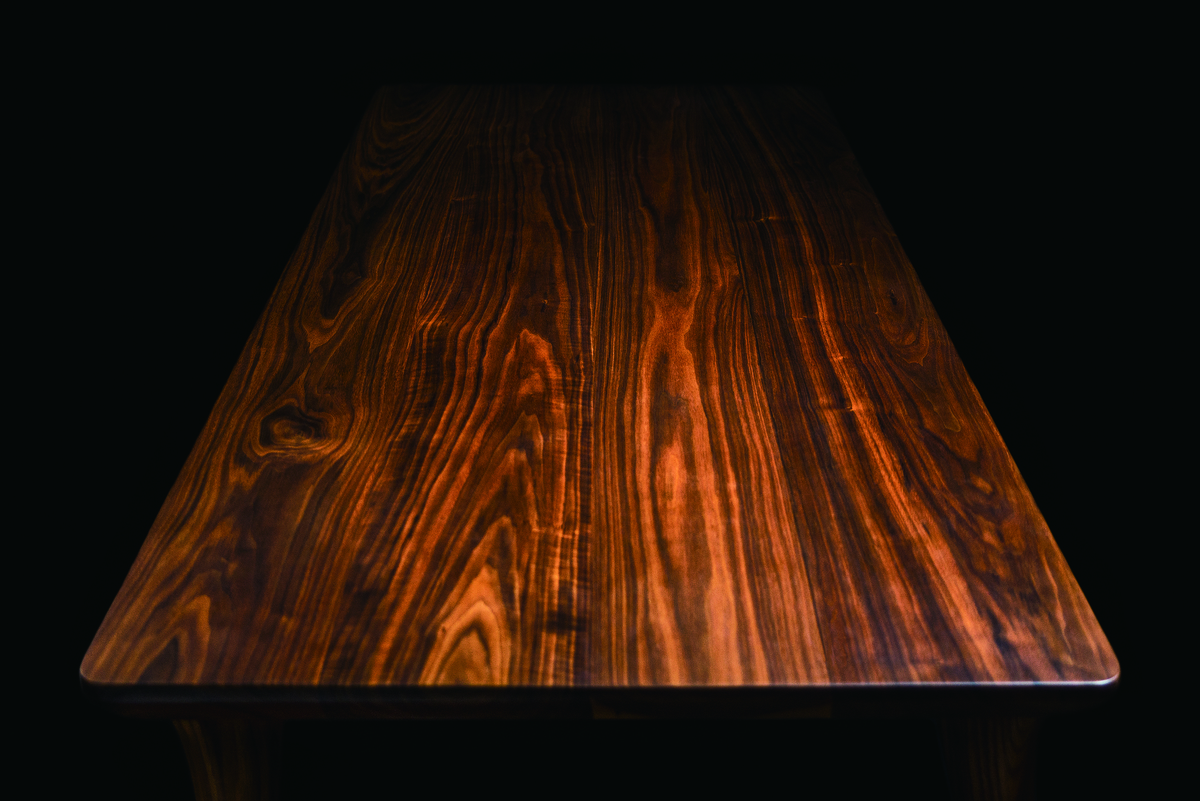
木目の使い方や合わせ方は、家具の表情や美しさを大きく左右する。
テーブルや収納家具の天板などはもちろん、椅子の脚一本から小物までが手掛ける全ての製品は、木目や色味がより見分けられるよう「自然光」にこだわってじっくり選別し、感性が認められた一部の職人が一つ一つ絵を描くようにじっくり時間をかけて木目合わせに意匠をこらしている。
Laying out wood grains
Layout of the wood grains make a large impact on the aspect and beauty of the furniture. Tables, top boards of cabinets and even the legs of chairs are all selected and laid out under the natural light, for the best outcome. The acknowledged craftsman put their hearts and souls into the layout, as if to painting a picture.
仕上げ塗装
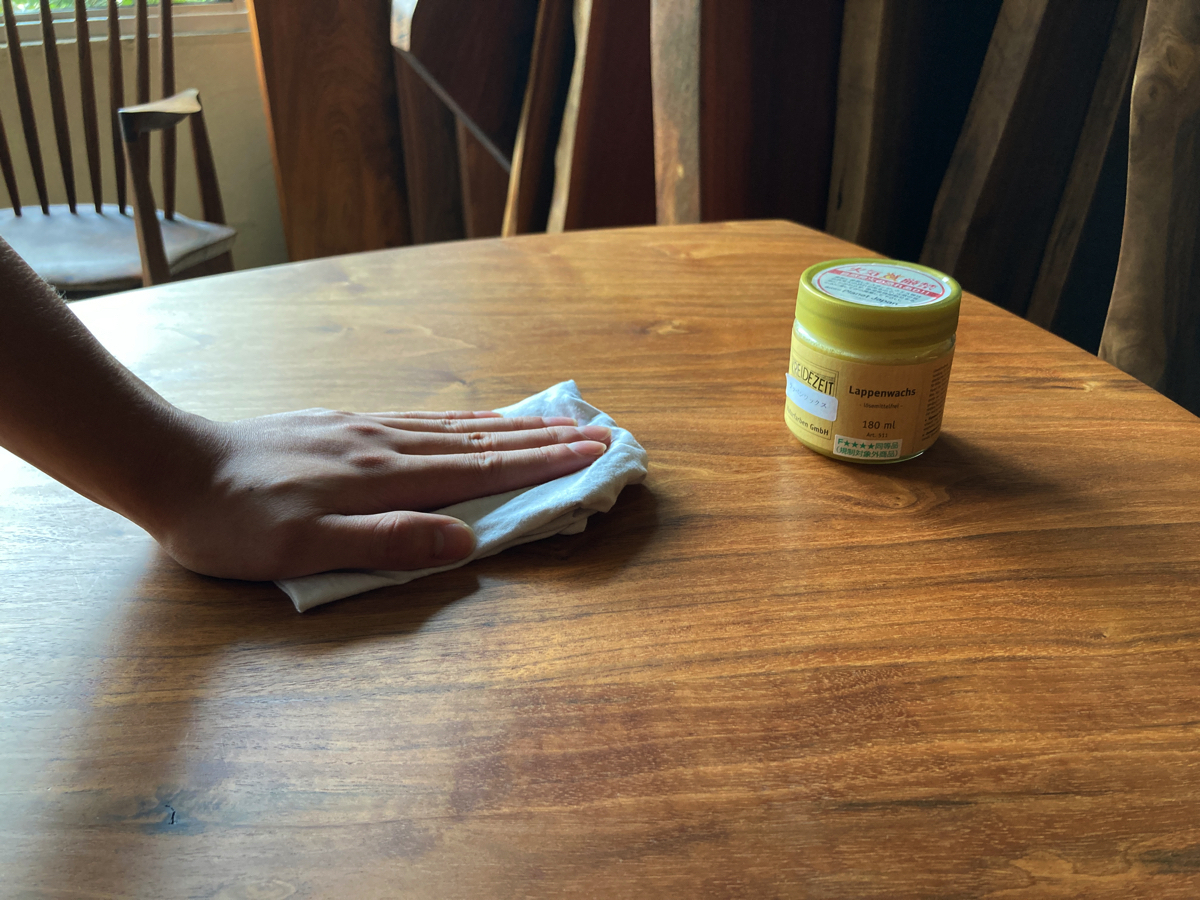
木のやさしい肌触りがありながらシミなども付きづらくメンテナンス性にも優れたKOMAオリジナルの下地剤を2種類塗り込み、天然ワックスを用いた仕上げ方法を採用している。 木の素材感や美しさを損なう塗装や着色塗装などはせず、素材のままの無垢の木でつくっているので、経年変化を楽しむと共に、もし大きなキズやシミがついてしまっても鉋で削り直して、すぐに新品の状態に戻すことができます。
Coating
Coating with our original substrate layer twice, then with natural wax, our furniture is less liable to stains and allow easy maintenance, while leaving the pleasant texture of wood. Everything is made from genuine wood material, with no layering or color coating to spoil the beauty, which gives you the experience of enjoying the secular change. Also when you make a big scratch or a stain, it is possible to plane the surface and restore to the original state.
椅子
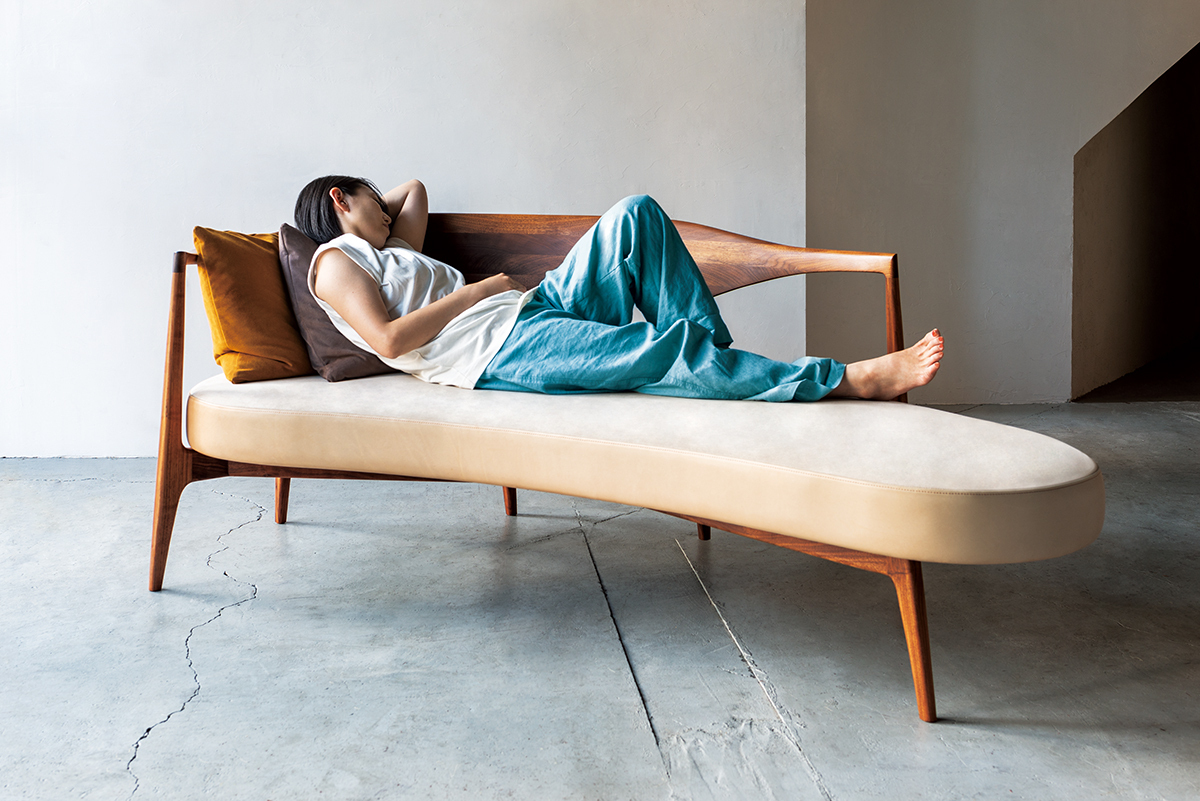
椅子は人の体を支えながら最も密着する道具であり、小さな生活空間といえる。
背筋を正して食事をしたり、脚を組んでダラリともたれて本を読んだり、どんな姿勢でも長く座っていられる「座り心地」を突き詰めるため、鉋や刀を使った手作業での削り出しにこだわっている。
Chairs
We think of chairs as a small living space for a person, while functioning as a tool to support your body and fit close to you. Straightening your back while dining, reading with a relax attire with your legs crossed, or any position you take on the chair, we offer the "best comfort" to sit on for a long period of time. For this purpose, we are particular about hand making our furniture with Kanna (planes) and Wagatana (Japanese blade).
テーブル・収納家具
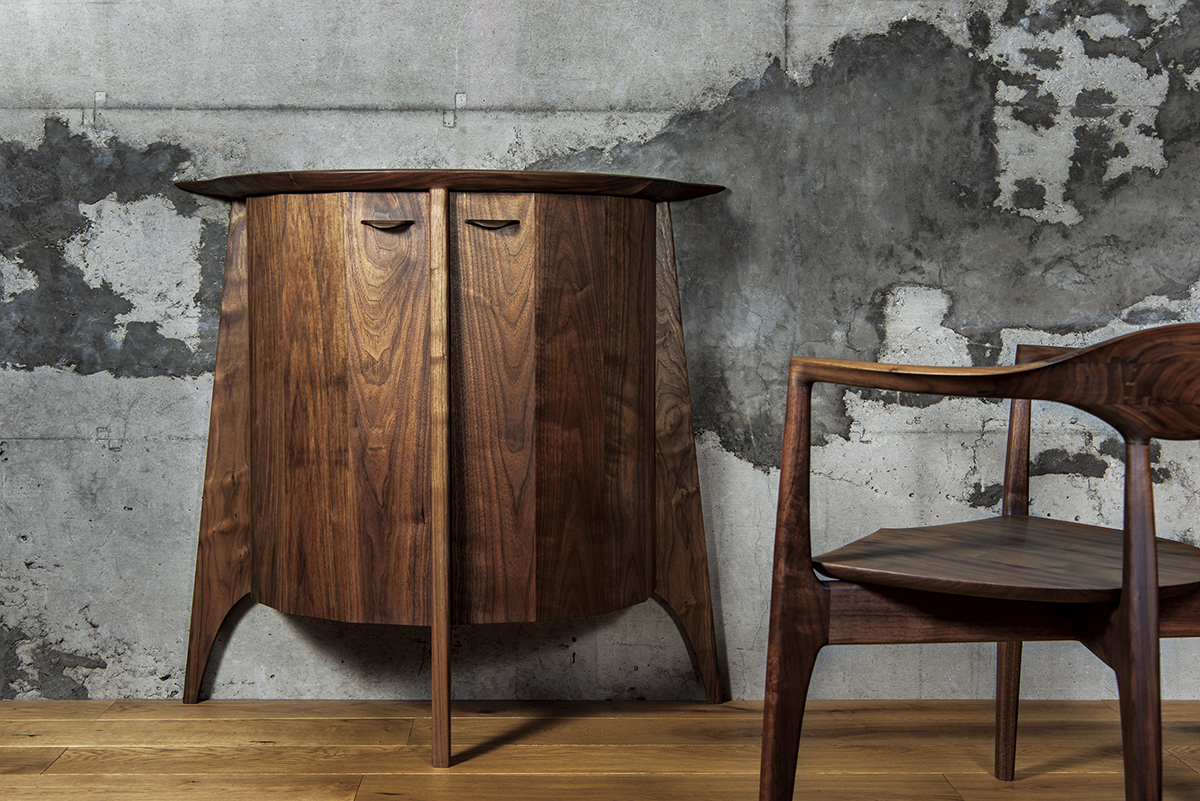
幅が広く割れや節などの欠点がない特別にストックしている無垢材を使い、木が本来持っている木目の美しさやなめらかな肌触りを最大限に活かせるよう、木目合わせに始まり、鉋仕上げに至るまで、細部に至るまで職人が意匠を凝らし、空間を引き締めるような最高の一台をつくっている。
Table and storage
We stock broad solid wood with no cracks or joints, and use it for tables and storage. We pay extra attention to the layout, and plane it carefully to bring out the beauty of wood grain and smooth texture. These finest furnitures thought out by our craftsman, will make the room more attracrtive.
職人の道具
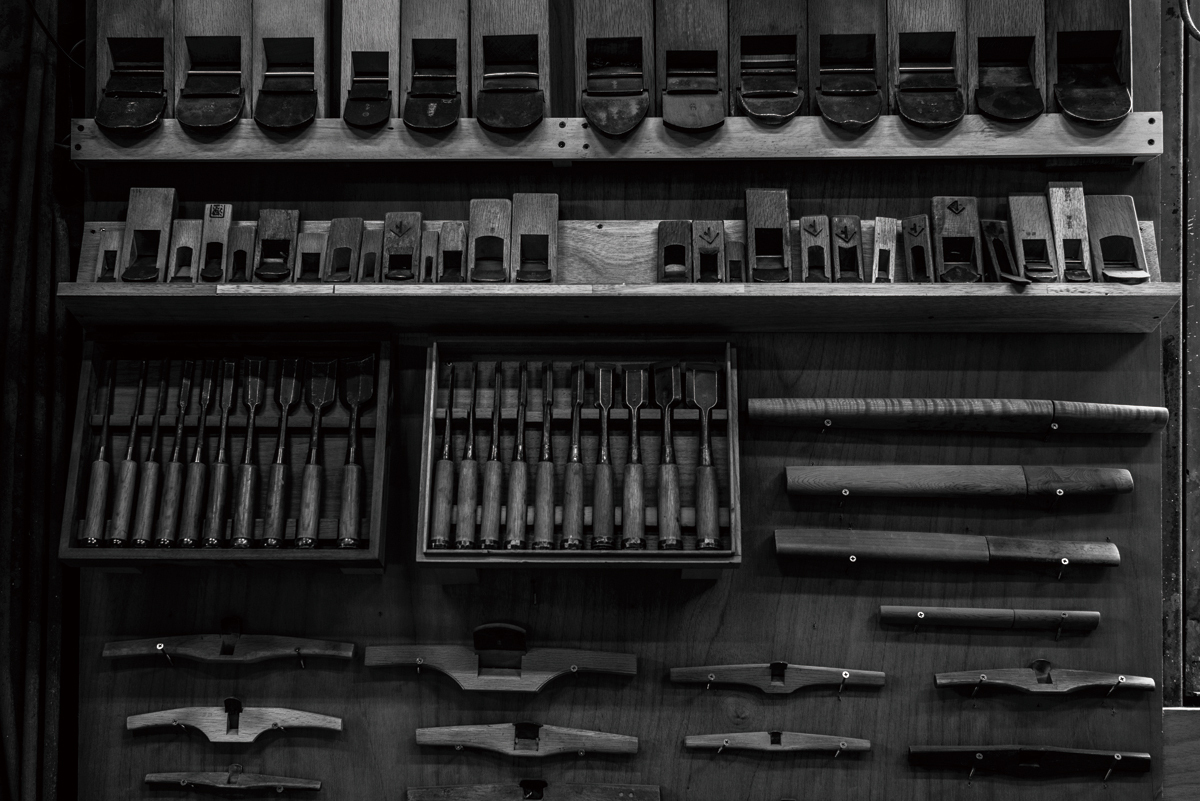
鉋や刀、鑿、砥石などなど、職人たちはそれぞれ好みや技量に合わせて自分専用の道具を多く所有している。 良い家具を作るには一流の道具が必要だと考え、KOMAの職人たちは伝統工芸士に造ってもらった一級品しか使わない。 武士にとっての刀なんていったら大袈裟かもしれないが、職人にとっての道具は他人には指一本触れさせたくないほど大切なものだ。
Craftsman 's tools
Planes, blades, chisels, whetstones, to name a few, each craftsman owns their personal tools depending on their likes and skills. We think of tools as dispensable to making eminent furniture, so we use only the best made by a traditional craftsman in Japan. We think of tools as a treasure we won't allow anyone to touch, almost like a sword to a samurai.
和刀
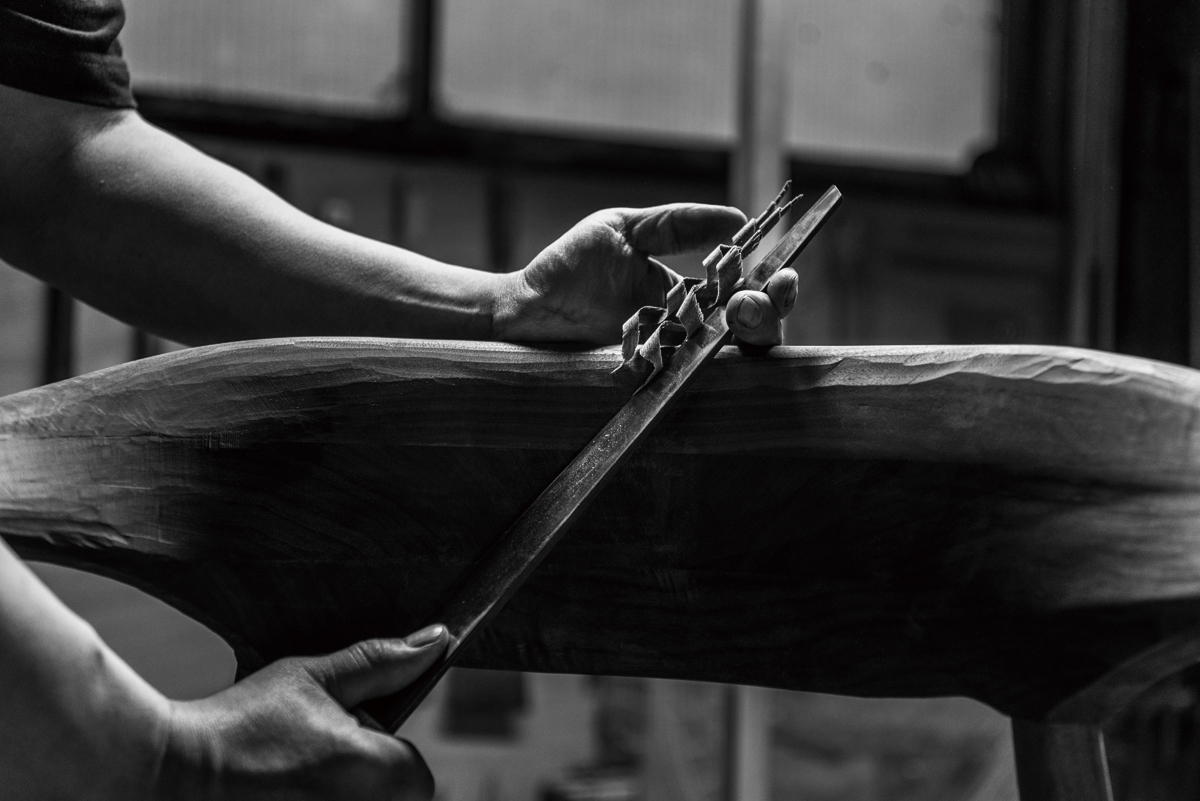
松岡がオリジナルで作った刃物で、原型は刃渡り12センチ前後の「繰小刀」と呼ばれる道具。 元々は椅子の細かい造形に使う道具だがKOMAの場合は削る量がめちゃくちゃに多いから、一本で様々な用途に応えられるよう一般的なそれの倍の長さの、刃渡り24センチのものを特注したのが始まり。そこから回転性を高めるため薄くしたり細くしたり、ナタのような使い方がしたくて根本の方は太くしたり鉄の種類を変えたりと改良を加えて今の形になった。KOMAの削り出し作業にはなくてはならない道具。
和刀を製作していくださっている伝統工芸士舟弘さんとのエピソードはこちら
Wagatana (Japanese blade)
We use Wagatana, originated from "Kurikogatana" which is a knife with approximately 12cm of blade length to use for shaping the detailed parts of a chair. But at KOMA, we shape out far more than normal, so to meet numerous tasks, Matsuoka placed a special order with a 24cm blade to start with. Then, for better rotational work, he made it thinner and more slim, also wanting to use it like a broad-bladed knife, thickened the base of the knife, changed the material of the iron, and gradually it became what we are using today. This Wagatana is an essential tool for shaping the furniture.
Watch our Youtube featuring Mr. Funahiro, the traditional craftsman for Wagatana.
平鉋
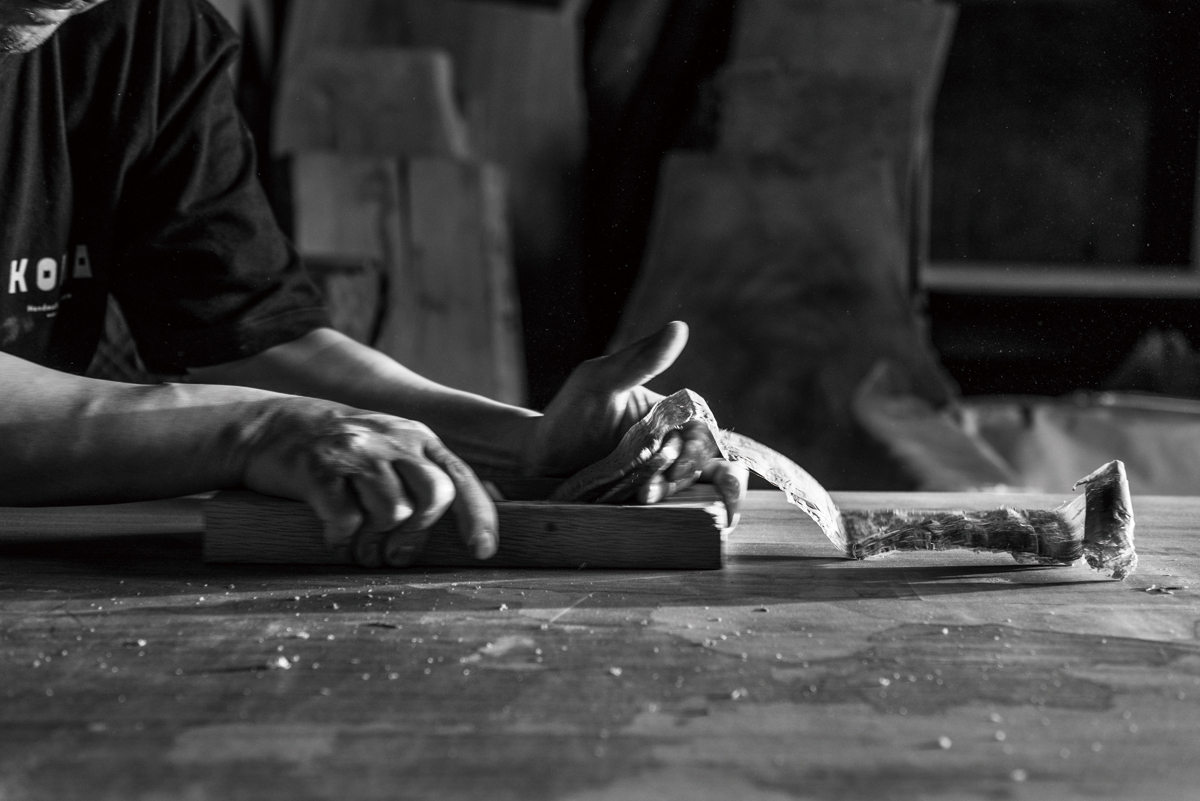
KOMAではテーブルの天板などの仕上げに登場する道具。
刃の研ぎや木台の調整などなど、まず道具として使う前の「仕込む」技術が難しく、高いレベルで言えば20年では足りない。 技術が増すほど遠く感じるような奥が深い道具。
削る材木の樹種や用途に合わせて鋼の種類や木台の調整を選択して使い分けて使用するため、職人によっては数十丁の鉋を所有している。 例えば、一枚の天板を仕上げるのに粗仕上げ、中仕上げ、仕上げ、最終仕上げと工程に合わせて4丁の平鉋を使う。 天板を一枚仕上げる度に全て研ぎ直すため、鉋を使っている時間よりも研いだり調整している時間の方がはるかに長い手間のかかる道具だが、それに見合った仕上がりを得られるなくてはならない道具。
Hiraganna (Flat planes)
At KOMA, we use this tool for finishing tabletops and top boards.
This is a tool that needs more than 20 years of experience to handle completely. Elaborate techniques are needed to set up this tool, such as sharpening the blade, adjusting the wood base and other details. The more skills you acquire, the more difficult you feel to fully have control over this tool.
Depending on the wood, different kinds of steel is used, and the adjustment of wood base is needed for each, so some of the craftsman own more than dozens of Kanna. For instance, to finish off a top board, we use four different Hiragannnas according to the process. Also, after we use a Kanna for one top board, the blades are needed to be sharpened again, so you need more time to adjust this tool than to use it, but the outcome is rewarding, and is indispensable for our work.
平鉋の薄削り
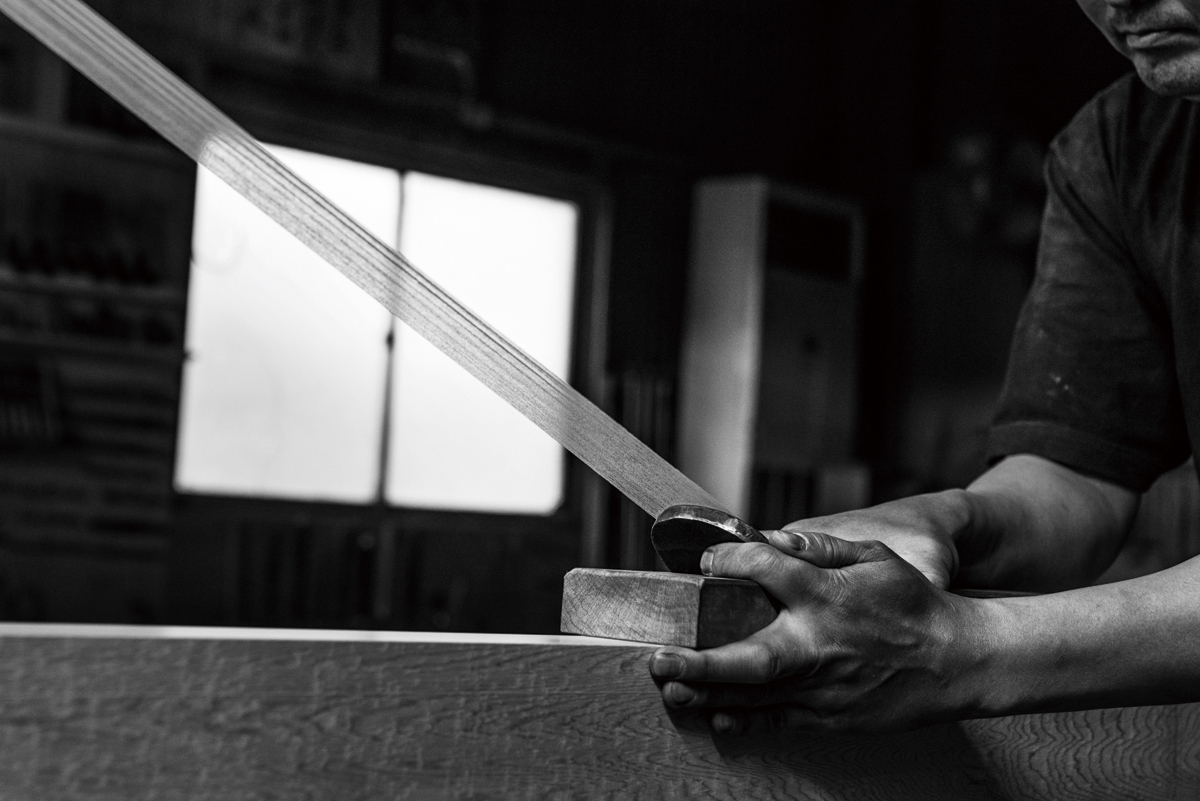
KOMAでは全ての刃物道具の基礎練習として取り入れている。 鉋の薄削というのは木を鉋で削った際にでる屑がどこまで薄くできるかというもので、9ミクロン(9/1000ミリ)以下が出せる職人は一流と言われていて、薄く切るほど木の繊維を痛めないため鏡のように艶が出て汚れや水分が防げる。 ちなみに髪の毛が50〜100ミクロン。赤血球が6〜8ミクロン。 KOMAでは最低9ミクロンをクリアしなければ鉋を使う作業は許されない。
松岡は世界でもトップクラスの3ミクロンを出す。
Shaving thin strips of wood with Hiraganna
We do this to practice basics for all edged tools. We practice how thin we could shave the strips of wood, and craftsman who could shave 9 microns or less is said to be the top ranking. The thinner you shave, the less wood fiber you damage, and it gives a mirror-like sheen, which prevents stains and water. For reference, hair counts 50-100 microns. Red blood cells are 6-8 microns. At KOMA, skills to shave less than 9 microns is needed to use the Kanna.
Matsuoka shaves 3 microns, which is first-rate worldwide.
小鉋
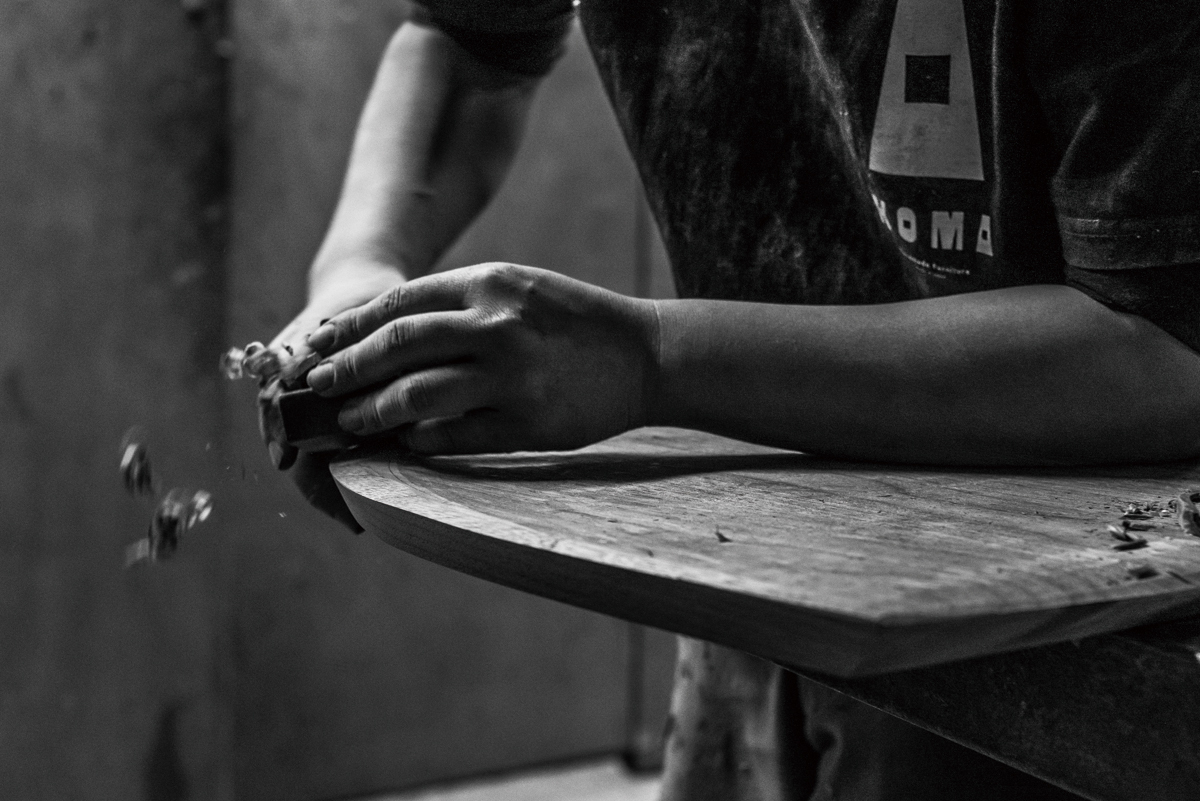
主に椅子の仕上げに使う小さな鉋 反っているものやクルンと丸いものなどなど様々な形がある。 自分の使いやすいように削りたい物の形に合わせてカスタムしながら使う道具。 平鉋ほど仕込みはシビアではないが、逆に使い手の造形力などのセンスが問われる道具。 木目を読みながら手のひらや指で木を削るイメージで自由自在に使いこなせるまでに長い年月がかかる。
Kogannna (small planes)
These are tools for mainly finishing chairs. Some are curved, some are curled, and you customize it to suite the shapes of things you are making. Not as difficult to adjust as Hiraganna, but you need to use it with flair. It takes a long time to gain perfect command of this tool, to use it as your palms and fingers on the wood grains.
天然砥石
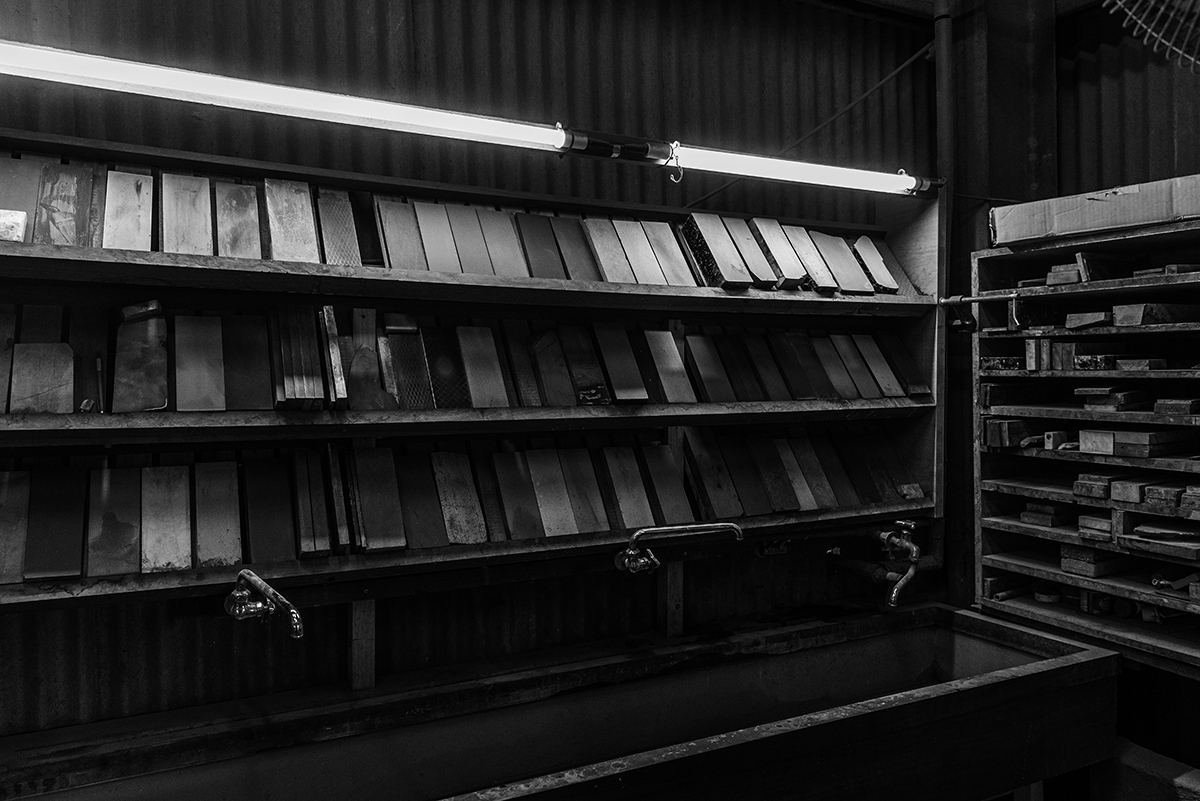
刃物を研ぐ際の最終仕上げには天然砥石を使っている。 読んで字の如く刃物を研ぐための天然の石で世界中に存在するが、最終仕上げに使われる上質なものは世界でも京都の山でしか採掘できず、高価なものは100万円を超える。 天然物が故、研ぎ味は一つ一つ異なり刃物や用途により使い分けるため職人たちは各々何丁も所有している。
職人が引退する際、二番弟子には刃物を、一番弟子には天然砥石をと言うくらい職人にとって大切なものだ。
Grit stone
We use grit stone for the final finishing of edged tools. It is a natural stone used to whet, which could be found all over the world, but the most high quality ones are only found in the mountains of Kyoto, which could cost more than one million yen. Because of its natural nature, each one is different, and craftsman usually owns numerous pieces for different use. There is a saying that when a master retires, he gives edged tool to the second, and grit stone to the top disciple. That is how important we think of grit stones.
鉋屑
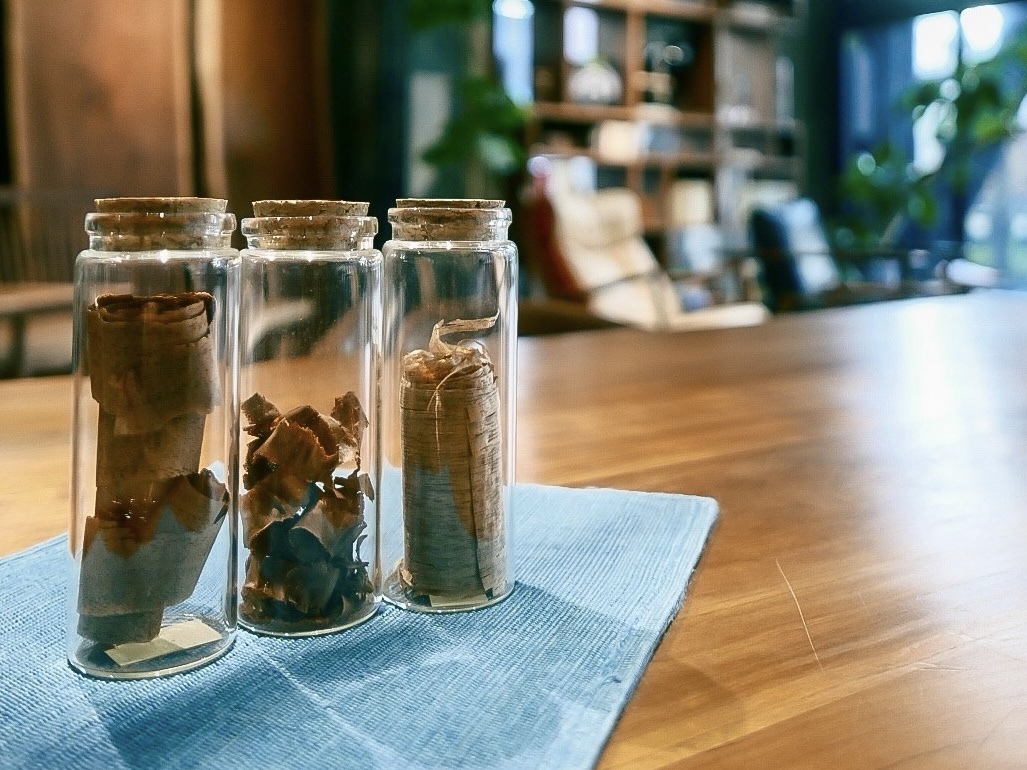
「かんなくず」とは刃物の仕上げ作業の際に出る木屑のことだが、ただのゴミではなく刃物の切れ味や職人の技術が見てとれる大切なものだ。 だからKOMAでは「鉋屑」にまでこだわり、美しい屑が出せる者にしか刃物の作業は任されない。 そして、その証として仕上げ作業の際に出た鉋屑を小瓶に入れてプレゼントしている。
Kanna kuzu
"Kanna kuzu" means wood scraps, which appears when finishing the furniture with edged tools. This is not just scraps for us, but something that shows the sharpness of tools and the techniques of craftsman. Thats why at KOMA, we are particular about the quality of "Kanna kuzu", and only the ones that could shave out the fine-looking scraps, are trusted to use the edged tools. For that reason, we gift customers a little bin filled with wood scraps from the finishing touch.
木という素材のいいところ
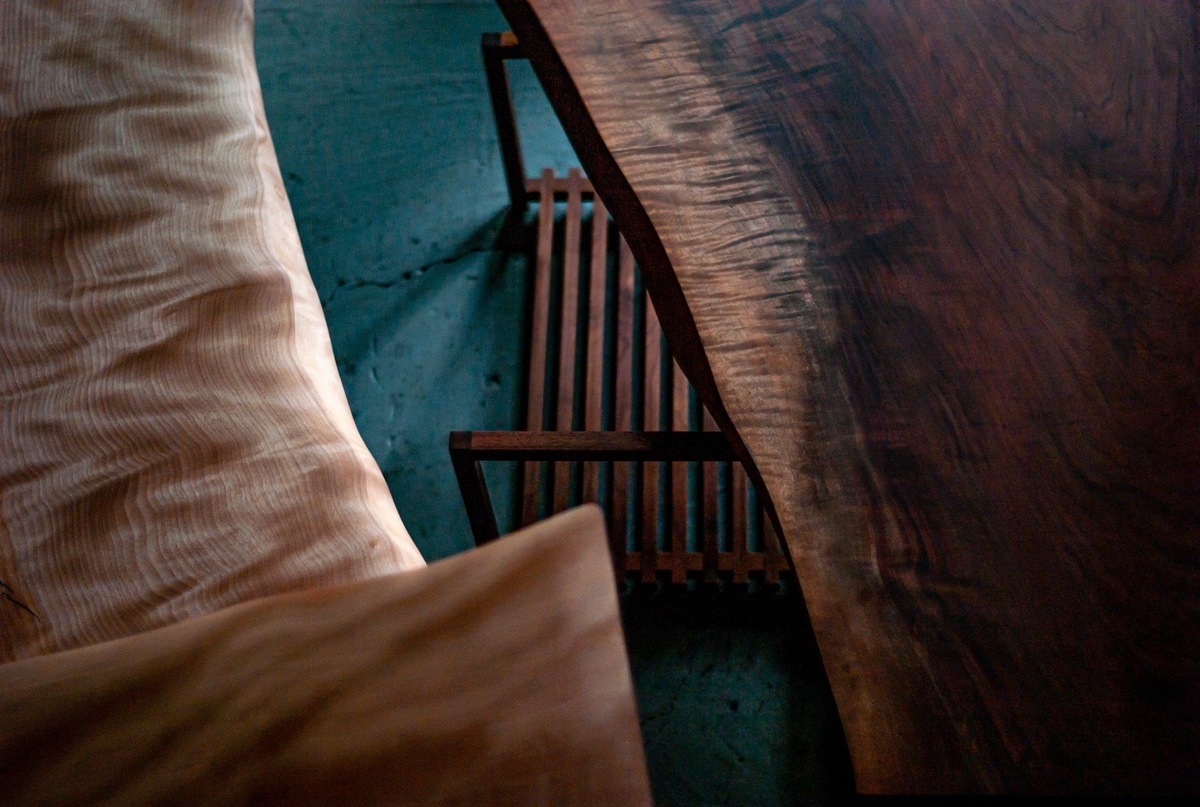
木という素材は同じ物が二つとない木目の個性や美しさに加えて、使い込むほどに人それぞれの味わいが備わっていく。例えば肘掛けをよく触る人の椅子は、特にその部分の艶が増しながら自分だけのオリジナルに育っていく。経年劣化ではなく経年優化する特性は木が持つ大きな魅力と言える。
Wood as a material
Grains and characteristics of every wood are deferent, which makes it more beautiful. But not only that, it ages with you. For instance, when someone touches the armrest of their chair repeatedly, that will gradually give a shine, and would turn into your one and only. One of the most appealing point of wood is that instead of deteriorating, it turns better by time.
組み
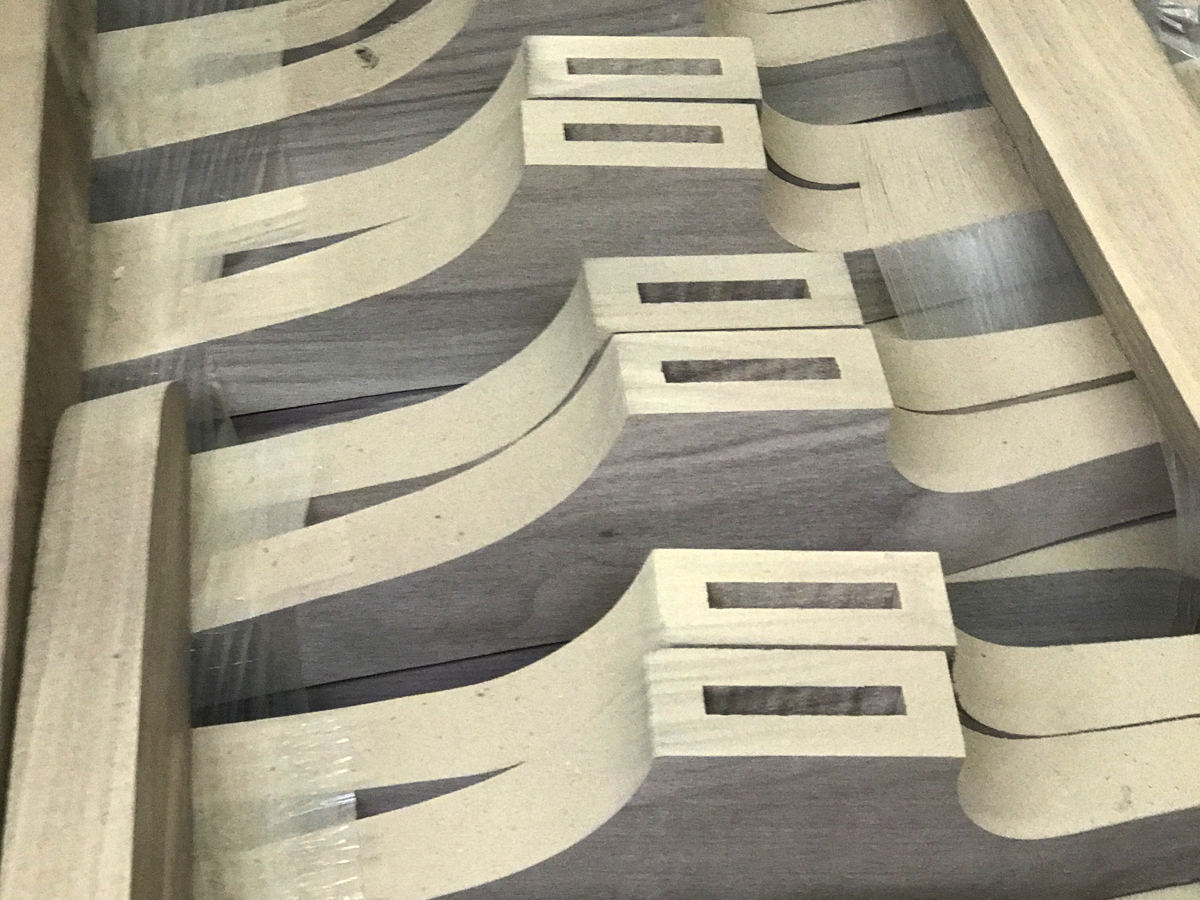
木を組む際は強度を上げるためホゾやアイカキといった伝統的な技法を採用している。 樹種によって木材の堅さや伸縮の違いを考慮し0.3ミリ以内の微妙な調整にこだわっている。当然クギなどは使わない。
Assembling
When assembling parts of the furniture, we use traditional techniques like tenon and "aikaki"for more strength. Depending on the type of wood, we consider solidity and flexibility of the material, and adjust to perfection within less than 0.3mm. Naturally, we never use nails of any sorts.
持ち出し・さすり
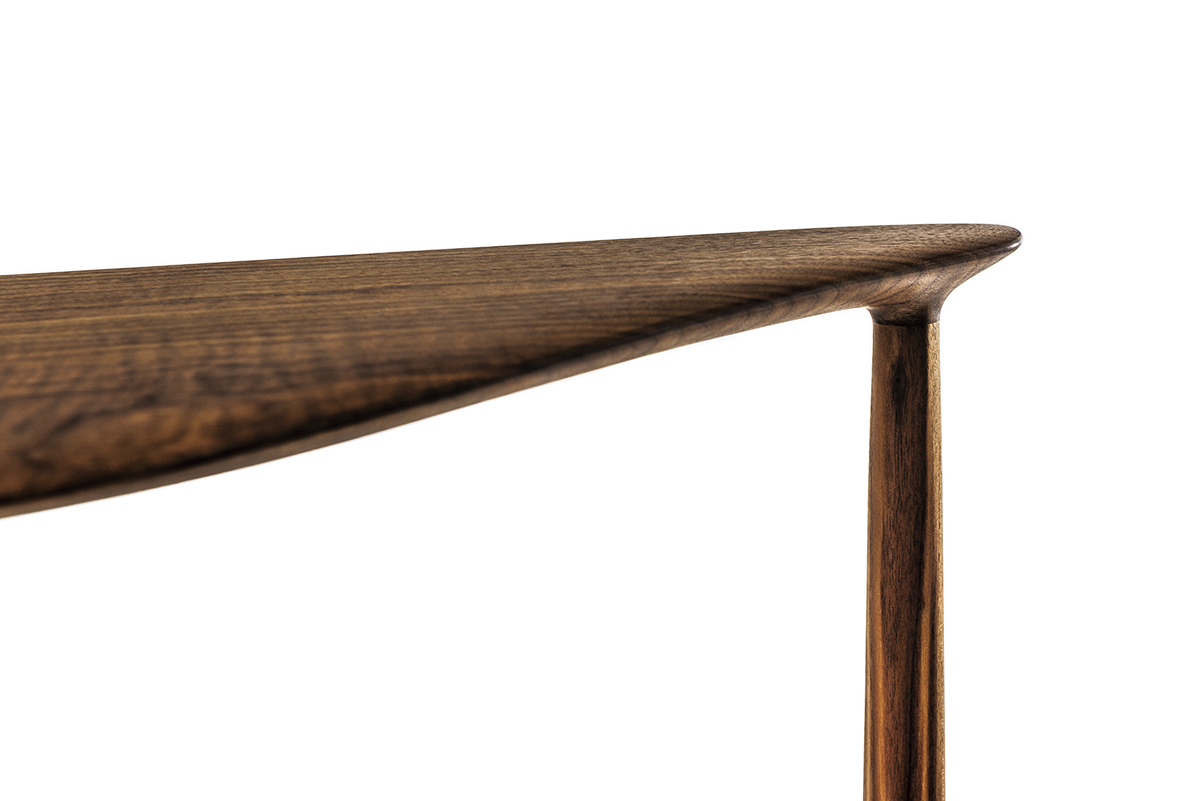
接合部を「持ち出し」にすることで、ホゾやダボを深くまで入れることができ強度が得られ、和刀などで削り出し「さすり」にすることで流れるような一体感が生まれます。 分厚い材料から削り出すため手間もかかるが、強度と美しさを両立できるこの工法を多く採用している。
Mochidashi・Sasuri
We join parts in "Mochidashi"method, which is to bring out the joining parts out from the main body, and doing so, it allows deeper embedding of tenons and dowels to give it more strength. Then we shape the connecting point with Japanese blades to "Sasuri" which gives a smooth finishing. This could only be done from shaving out of a thick material, which takes extra time, but we use this method on many of our products, for more strength and beauty.
木取り
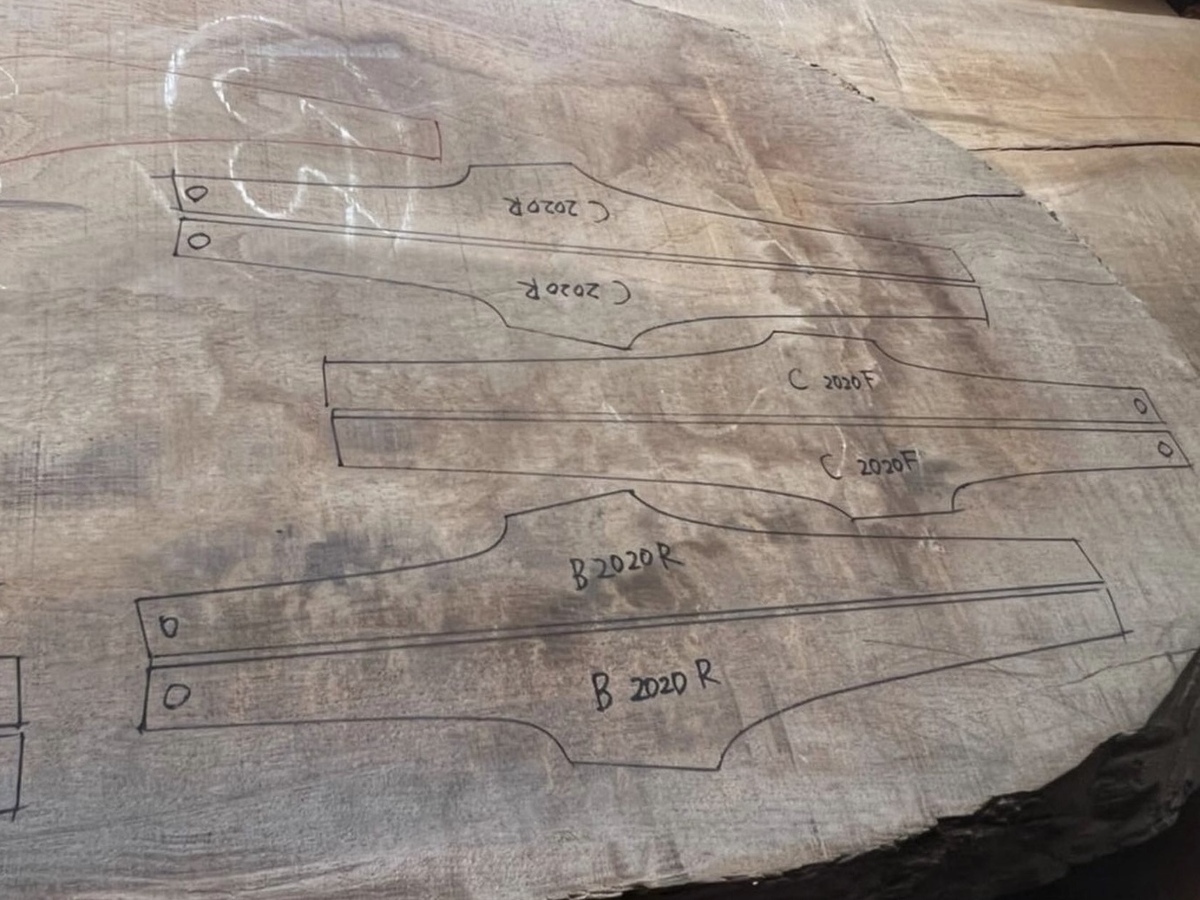
木には縦横の木目方向があり、まっすぐに伸びる「柾目」曲線混じりの木目模様の「板目」などがある。それらは特性が異なるため、適材適所に木取りしていくことで強度を持たせ狂いを軽減すると同時に木目が揃った美しさも得られる。
Cutting-out wood
Wood grains run lengthwise and crosswise, and depending on the way of cutting , the straight grains "Masame" and cross grains "Itame" appears. The characteristic differs between them, so it is necessary to cut out depending on the usage. Doing so it would strengthen the furniture, reduce the chance of warp, and also brings out the beauty of matching grains.
